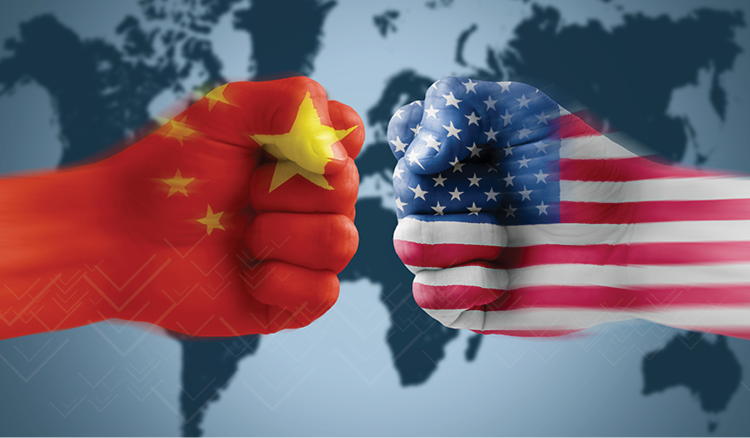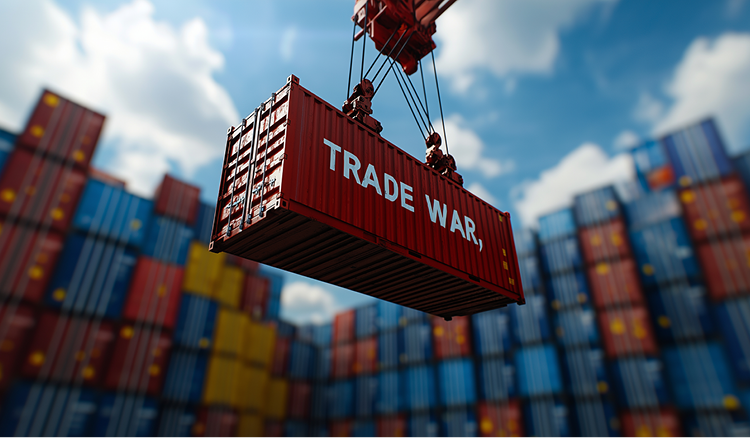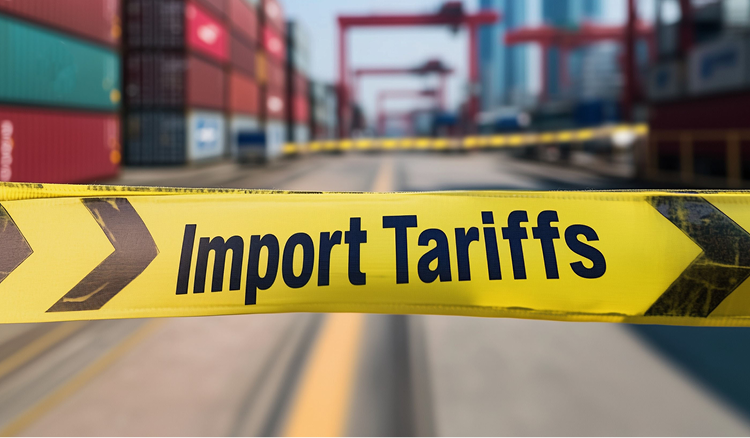Trump's Tariffs on Canada, Mexico and China: Background, Implications for Manufacturers & Distributors, & How Veryable Can Help
In this article, we’ll discuss Trump’s Tariffs on Canada, Mexico, and China, the implications for manufacturers and distributors, and how Veryable can help.
If you’re looking for information on other tariffs, check out these articles:
Note: Due to Trump's recent announcement about the Canada & Mexico Tariffs, we've written another article on this topic. Click here to read.
Background
In an effort to hold Mexico, Canada, and China accountable to their promises of halting illegal immigration and the flow of fentanyl into America, on February 1st, President Trump signed three separate executive orders under the International Emergency Powers Act (IEEPA) to add new tariffs on goods from Mexico, Canada and China. Specifically, Trump stated plans to implement a 25% additional tariff on imports from Canada and Mexico and a 10% additional tariff on imports from China. Energy resources from Canada will have a lower 10% tariff.
Just two days later however, President Trump announced a one-month pause on the 25% tariffs on Mexican & Canadian goods, including the 10% levy on energy products. This announcement came shortly after a phone call between President Trump and Mexican President Claudia Sheinbaum, in which Sheinbaum agreed to immediately supply 10,000 Mexican National Guard troops to the US-Mexico border. The decision to pause the Canadian tariffs came shortly after a phone call between President Trump and Prime Minister Justin Trudeau, who has stated that Canada will spend $1.3 billion on a plan to reinforce its border with new helicopters, technology and personnel. Additionally, Trudeau stated on his X account that Canada will appoint a Fentanyl Czar, list cartels as terrorists, ensure 24/7 eyes on the border, and launch a Canada-U.S. Joint Strike Force to combat organized crime, fentanyl and money laundering.
The 10% tariff applying to products from China however went into effect February 4th. Afterwards, China firmly rejected the U.S. rationale linking tariffs to fentanyl control and announced retaliatory tariffs shortly after. Starting February 10, China implemented a 15% border tax on U.S. coal and liquefied natural gas imports, alongside a 10% tariff on American crude oil, agricultural machinery, and large-engine vehicles. While much attention focuses on the U.S.’s status as the biggest oil & gas producer in the world and a top 10 exporter, the U.S. is also a major coal exporter. In Q3 of 2024 for example, China imported 3.765 million tons of U.S. coal, making it the 2nd largest individual buyer after India.
As a result, China will likely look for coal elsewhere in tariff-free markets like Australia or Canada, and the U.S. will likely try to increase exports to its next biggest customer, India.
Additionally, citing national security concerns, China’s Commerce Ministry and Customs Administration has implemented export controls on tungsten, tellerium, molybdenum, bismuth, and indium. This poses major challenges for defense, clean energy, and high-tech industries which have historically relied heavily on China for these metals, especially those importing bismuth and tungsten which there is currently no production of in the U.S.
Lastly, China has stated plans to challenge the U.S. tariffs at the WTO and has also both launched anti-monopoly investigations into Google, PVH Corp (Calvin Klein & Tommy Hilfiger), and biotech firm Illumina.
Implications For Manufacturers & Distributors
While these tariffs will hurt consumers in the short run, Trump is betting that since the U.S. is the world’s largest economy, China and other foreign exporters will struggle to find viable alternatives and will be forced to renegotiate trade terms with the U.S. For reference, the combined GDP of Russia, India, Africa, and South America amounts to just over 40% of the US GDP, meaning that these foreign exporters will be hard-pressed to maintain profitability and will be putting heavy pressure on their own government to take action. This is why Mexico and Canada were so quick to give in to Trump’s demands.
With that being said, these tariffs are still a double-edged sword. While fewer imports will provide a boost for domestic manufacturers, higher input costs will drive up consumer prices in the short run. As a result, American companies who import Chinese goods will need to find new suppliers immediately, and in the event the Canada and Mexico tariffs are implemented, explore reshoring strategies like VW Group already has. Otherwise, importers will either have to pass off costs to consumers or absorb the added costs for the time being, both of which will negatively impact price competitiveness. For small and medium sized businesses especially, who cannot afford to absorb the excess costs, this could mean disaster.
How Veryable Can Help
Having a flexible portion of your workforce means you can scale down instantly to keep costs in control without the need for any layoffs, and then immediately back up again when needed. This is crucial to maintaining operational performance without inflating fixed labor costs.
This also provides a massive operational competitive advantage. In the event of any trade renegotiations between China and the US, things could change quickly, meaning those who previously laid off workers will be scrambling to scale back up quick enough to reclaim market share and maintain their foothold in the market. With a shrinking labor supply amidst Trump’s crackdown on illegal immigrant labor and so many businesses competing for the same workers, this will be incredibly difficult. This leaves the door wide open for those who can scale up instantly, like the thousands of manufacturers and distributors who have implemented Veryable into their operations.
For businesses who aren’t currently using Veryable and may have to consider layoffs if consumer demand temporarily declines, a better option would be to encourage workers to sign up as Veryable operators. This not only provides a softer landing for them, but this way these trained workers can still be brought back on days when they're really needed. The best part is, you don't have to let all the training and time and money invested in these workers go out the window for good. The reality is, if you have to layoff workers, most fill find a new job immediately out of necessity and won't be waiting around to see if they might have an opportunity to be rehired. This move can also provide you with a head start on building your labor pool, not to mention that having former full-timers working alongside Veryable operators will help them hit the ground running.
To learn more about this approach, check out this article.
Conclusion
The current US-China trade war presents both challenges and opportunities. While tariffs will raise import costs and increase consumer prices in the short run, they will also provide a boost for domestic producers and could even lead to more favorable trade agreements down the road between the US and China. Given the size of the US economy, the leverage is in President Trump’s hands, as we’ve already seen with Mexico and Canada quickly caving in to his demands.
Either way, to avoid having to eat the increased costs, companies dependent on Chinese imports need to quickly pivot and either start the reshoring process, identify domestic suppliers, or figure out a way to scale down temporarily and ride out the lower consumer demand. For those with Veryable implemented into their operations, this will be seamless.
To learn more about how Veryable can help you navigate these changes with confidence, check out our “Navigating Trump 2.0” page. Here you’ll find more resources that will help you thrive in the coming months. As things continue to evolve, we’ll be publishing more articles like this.
To get started with on-demand labor, either contact your local team or create your free business profile.
Previous Posts
Trump 2.0 Week 9 Recap: What’s New, What’s Coming Up, and Why Agility Is More Important Than Ever
The Future of Manufacturing and Logistics
Create a free business profile today to explore our platform.






